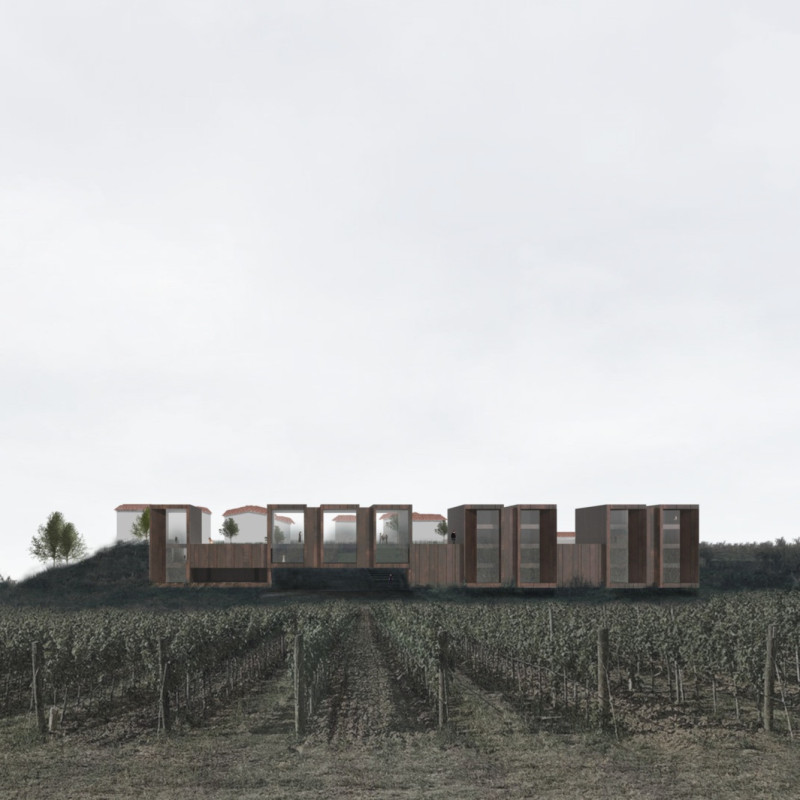5 key facts about this project
The project showcases a thoughtful approach to architecture that carefully considers its relationship with the surrounding landscape, particularly a patchwork of vineyards. Positioned in a transition area between existing buildings and open fields, the design creates a visual and functional link that adds to the overall experience of the site. By taking cues from the organization of the vineyards, the structure adopts elongated forms that frame the scenic views and integrate smoothly into the landscape.
Landscape Integration
A central aspect of the design is its integration with the environment. The architecture serves as a bridge, connecting public spaces with the vineyards while honoring the existing rural street. This integration respects traditional pathways while encouraging accessibility and interaction with nature. Such design choices promote a sense of place and enhance the relationships between different spaces.
Control of Sightlines
The management of sightlines differentiates this design. Key architectural features are intentionally positioned below the horizon line to maintain open views. This approach reduces visual barriers, allowing a clear connection between indoor spaces and the expansive landscape beyond. The result is a harmonious exchange between built forms and their natural surroundings, ensuring the architecture supports and enhances the scenic context.
Functional Diversity
The layout offers a variety of spaces, including a bar, an open-air pool, multi-purpose conference rooms, and hotel rooms with private gardens. Each area caters to varied user needs and fosters community interactions. The hotel rooms provide direct access to greenery and outdoor settings, encouraging guests to engage with the natural environment.
Corten Steel and Durability
Material choices play a significant role in the overall expression of the design. The project incorporates Corten corrugated panels, HE400 and IPE360 steel profiles, and Corten perimeter panels. These materials are selected not only for their strength but also for their capacity to blend with the landscape. They offer an aesthetic quality that aligns with the design philosophy while ensuring durability against weather conditions.
The arrangement of the elongated volumes mirrors the orderly patterns of the vineyards. This careful planning establishes a rhythmic visual sequence in the landscape, enhancing the connection between architecture and nature.






















































